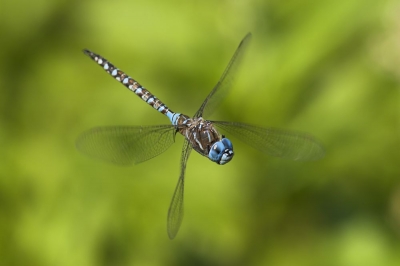
Researchers have found out the intricate physics and neural controls that enable dragonflies to right themselves when falling
Their stretched bodies, huge wingspan and colouring, make dragonflies a unique sight. The fact that they are one of the oldest insect species on Earth also makes them one of the earliest to discover aerial flight.
A group of researchers led by a professor of Mechanical engineering and Physics in Comell University’s College of Art and Sciences have determined the physics and neural controls that allow dragonflies to correct themselves while they are falling. This paper that speaks about a dragonfly’s recovery mechanism was published in May in Science.
3D-tracking
In order to study this subject, a controlled-behavioural experiment was designed wherein a dragonfly would be dropped upside down from a magnetic tether. The researchers found that the insect’s manoeuvres followed the same pattern. After capturing these using high-speed cameras, the motions were reconstructed using 3D-tracking software.
Once they had successfully completed the challenging part of creating a computational model that simulated the dragonfly’s aerobics, what remained was finding out how the dragonflies knew they were falling. Unlike human beings who have an inertial sense, dragonflies rely on all five of their eyes to gauge their uprightness.
Less than 200 milliseconds Dragonflies visual cues thus trigger reflexes that send neural signals to their four wings. As a set of direct muscles modulate the left wing and right wing pitch asymmetry accordingly, all that a dragonfly requires is three or four wing strokes. In less than 200 milliseconds, a dragonfly that is tumbling downwards can thus roll 180 degrees and resume flying the correct way.
By combining kinematic analysis, physical modelling and 3D simulations, researchers have come with crucial inferences of an insects behaviour in a non-invasive manner. Engineers might be able to employ these insights in order to improve the workings of small flying machines and drones.
Picture Credit : Google




